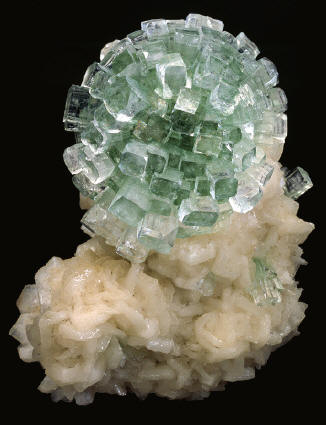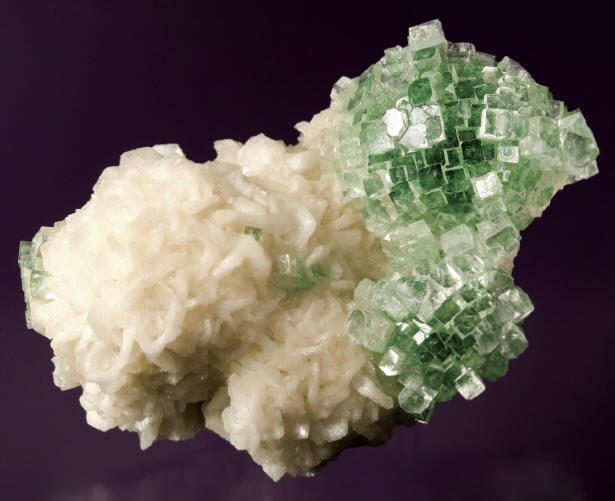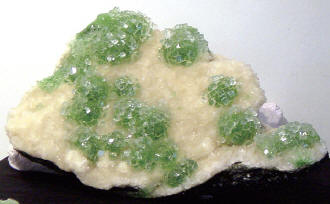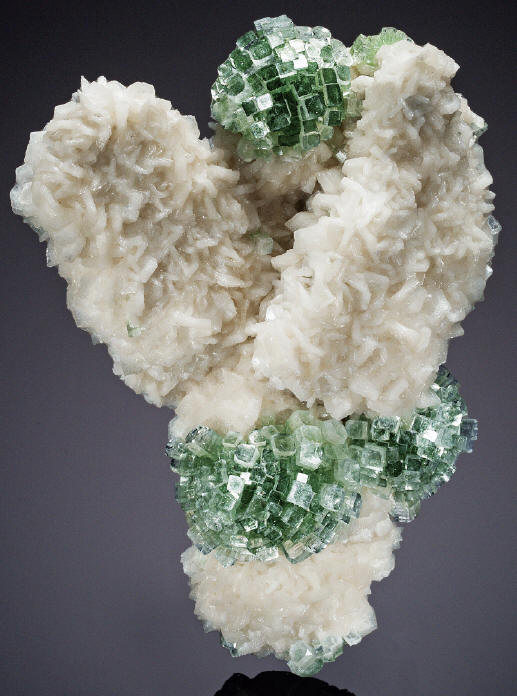Mumbai, a city more familiar to mostWesterners, lies 285 km away to thewest-south-west. Momin Akhada is lo-cated in an area which depends on waterfor irrigation sourced from wells excavatedin the solid basalt and, becausethese wells last only for a few years, newones have to be “dug” on a continuousbasis. But while there are dozens of suchwells in the vicinity of the village, thevast majority of them do not producepockets and, even when pockets are encountered,the quality is typically poor,with stilbite and colorless apophyllite asthe dominant species. To date, pocketswith good quality specimens have been found in only three of the wells in thisarea. All of them are located close to oneanother, on an almost straight east-westtrend, and over a total distance of about300 m. These wells have been dug over aperiod of twelve years. The first, knownas “Well Number 1” was excavated in2001; the second, “Well Number 2” wasdug in 2004, while “Well Number 3” wassunk in 2013.

“Disco ball” apophyllite on stilbite fromthe first find in 2001, 12 cm high. HMNScollection. J. Scovil photo.
What makes specimens from theMomin Akhada area so special and distinctivefrom other finds is the presenceof the apophyllite-(KF) in the habit ofprismatic crystals with flat terminations(dominant pinacoid), and with very smallpyramid faces. This contrasts with mostapophyllites from the region that arecharacterized by a dominant pyramidface. Furthermore, these highly soughtaftercrystals form bow-tie, radial, hemispherical,or even almost sphericalaggregates, usually growing on a bed ofwhite to cream-colored stilbite. The colorof the apophyllite varies from almost colorless,though pale green (most common),to green. In the majority of casesthe color of the central parts of the crystalaggregates is more intense, fadingsomewhat, or even becoming completelycolorless towards the crystal terminations.

Specimen with two apophyllite “disco balls” on stilbite. 18.7 cm wide. G. and J. Spann colelction. T. Spann photo.
As a result, the aggregates withshorter, or cleaved crystals feature muchbetter color than those containing longerones. The green color of the apophyllitefrom Momin Akhada changes its hue in different types of light, from deepergreen to gray-green, and this is one ofthe reasons why specimens from thesame pocket may look quite different inphotographs, depending on the lightingconditions. In the majority of cases prismfaces are glossy, sharp, clean and verylustrous. The luster of the pinacoid facesvaries between finds from glossy,through partly- to completely frosted faces. Specimens in which the pinacoidfaces are lustrous, and in which the crystalsare arranged in spherical aggregatesresemble the mirror balls that usedto be hung from the ceilings in the discothequesin the 1970s and 80s, and thisis why they are known as “disco balls” among mineral collectors. For better orfor worse, apophyllite has a perfect basal{001} cleavage, and these cleavageplanes can look almost identical to themuch more desirable high-luster pinacoids.
In some cases these cleaved crystalversions can be quite difficult todistinguish.

One of the large specimens (c. 45 cm wide) with numerous “disco balls” after extraction from the well and first washing. S. Makki photo.

Apophyllite “disco balls” on stilbite from the first find, 26.6 cm tall. ex Hoppel collection. Mark Mauthner photo; courtesy Heritage Auctions.
Specimens from all three pocketsfound in the wells at Momin Akhada producedapophyllites characterized bythese same distinctive features. However,there are some subtle differencesbetween specimens from the three findsincluding the size of the individual crystals,the size and symmetry of the aggregates,the abundance of the bow-tieclusters, and the presence of calcite andstalactite-like aggregates of stilbite. Thecharacteristic features of each find aredescribed below.
The history of the three discoveriesin Momin Akhada is also an intriguing“three chapter saga” of the fight betweentwo competing Indian mineral dealerswhich included corruption, threats ofviolence (with guns!), and litigation.These interesting stories are also toldbelow.






 YueGongAnBei 44051102000467
YueGongAnBei 44051102000467


 |
|